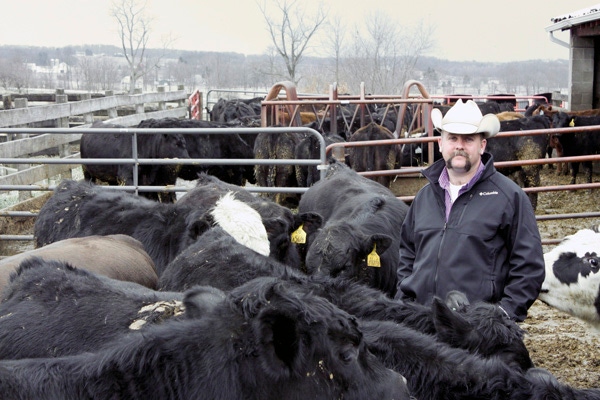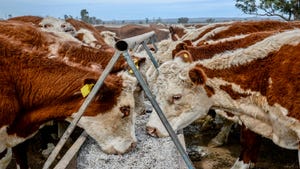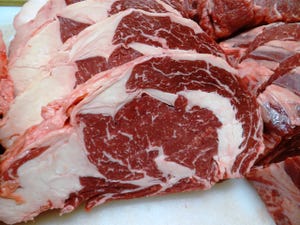Ohio State University’s Agriculture Technical Institute And CAB Team Up To Educate
Certified Angus Beef® teams up with their neighbor, Ohio State University’s Agriculture Technical Institute, to educated sales staff on beef production.
March 8, 2012

Nobody can illustrate cattle comfort better than, well, a comfortable cow.
Even the best speakers can’t make an audience feel what it’s like on a farm. There are no words that can replace the actual experience of seeing cattle first hand—watching them roam the pasture or eat out of the feedbunk.
That’s why Certified Angus Beef LLC (CAB) has a newfound tradition of sorts. Nearly every time sales partners travel to the Wooster, Ohio-based headquarters for training and education, the company takes them on a field trip. The Grace L. Drake Agriculture Laboratory, part of the Ohio State University’s Agriculture Technical Institute (ATI), just miles from the CAB office, is run as a for-profit, working farm.
“The more our licensees know about the production side of the beef business, the better it will make them at selling and marketing that product,” says Margaret Coleman, CAB assistant director of education.
Retailers, food distributors, chefs and restaurateurs travel to the ATI beef facility to learn what happens from conception to the packinghouse. Manager Casey Meek typically leads the tours, explaining the beef industry in easy-to-understand terms.
“We get all different levels of people out here, from those who raise cattle themselves to folks who have never been on a farm,” Meek says. He’s used to that, because students come into the beef program with a variety of backgrounds, too.
The farm houses a 110-head, mostly commercial Angus herd that is divided into fall and spring calving groups.
“We try not to do anything that a normal farm wouldn’t do,” Meek says. “When we need to vaccinate cows, the students come out and we teach them how to vaccinate. "We teach nutrition, genetics and many other management practices.”
They finish all the progeny themselves and then they’re harvested at a local processing facility.
“When you go there, it looks like you could be pulling into any Midwestern farm,” Coleman says. Meek adds to that authentic experience, bringing knowledge from employment at working farms and ranches in Nebraska and Ohio prior to his current role.
“When people leave, they always comment on getting that personal connection with a cowboy,” she says. “They get a better understanding of what production is really like and the care that farmers and ranchers have for their livestock. That’s really important.”
Q & A sessions can be as diverse as the groups, but Meek can almost guarantee hormone implants will be part of the discussion and explained in context. Many also ask about any recent ag-related news items they’ve heard about.
“The neat part of getting people in here who have never been on a farm, is that we can show them all the good things that happen on a farm,” he says. “We can show how much people care for their animals and it’s their livelihood.”
ATI is installing a Temple Grandin-designed handling facility, adding to its focus on low-stress animal husbandry.
“They have extremely well-kept facilities, which makes it a great place to showcase,” says Coleman.
Meek is quick to note that it’s a two-way partnership, with CAB staffers giving class presentations at ATI and helping with labs.
“Education is their No.1 goal, whether it’s educating students or outside industry folks,” Coleman says.
It seems ATI and CAB share more than just a zip code.
You May Also Like



